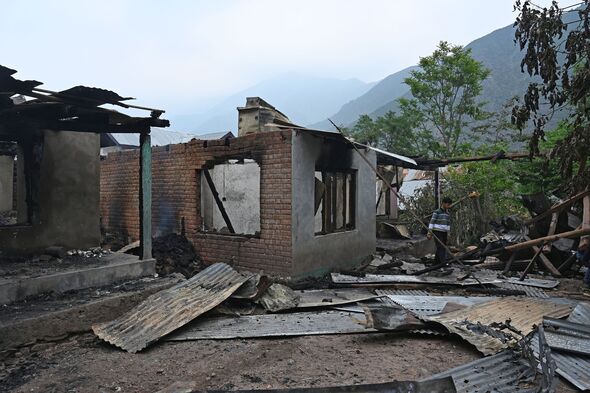South Asia may have only 3 per cent of the world’s area but with a population of slightly over 2 billion people, it has nearly 25% of the world’s population.
This means that South Asia has one of the highest population densities in the world, estimated as the number of people living in one square km.
While the entire world has a population density of about 60, South Asia has a population density of 303, over five times the world average.
In several cities of South Asia the population density can be many times more. In the most densely populated district of Karachi Central, the population density is 55,396. In Kolkata this is 24,252.
One of the implications of very high population density is that in any modern-day war which uses very destructive weapons, loss of life can potentially be much higher compared to most other countries. To mention two war and civil war-ravaged countries which have suffered high war-related mortality in recent times, Ukraine has population density of 67 while Sudan has population density of 29. This gives an indication of potentially how high war mortality can be in conditions of very high population density that prevail in South Asia.
These and several other facts regarding very high risks must be kept in consideration at a time when a lot of concern is being expressed regarding the increasing possibilities of escalation of war-risks involving India and Pakistan.
However the single most important factor is not regarding the risk escalation of recent days. The most important fact is that India and Pakistan have stepped back from such high risk situations in the past to avoid war. If they could do so in the past, they should be able to do so now too, thereby saving South Asia from massive distress and disaster.
Both sides are heavily armed and are in a position to procure more weapons from bigger powers. Both sides are nuclear weapon powers and there are estimates of the two countries having a total of about 340 nuclear weapons, more or less in equal numbers.
War involving any such two countries A and B may take this path—in the first few days there is high loss of life from conventional weapons on both sides but with the passage of time the bigger conventional power A gains a clear edge, and then faced with a serious crisis, the weaker power B resorts to using nuclear weapons and in reply immediately the stronger power A also uses nuclear weapons.
Of course this is not a very likely path as leaders of both countries being well aware of the unacceptably high dangers of nuclear weapons are likely to stop short of using these but at the same time the possibility of use of nuclear weapons cannot be ruled out entirely, and this is a very big risk indeed, an unacceptably high risk.
The risks have also increased at present because of other big wars occupying the attention of great powers. However even otherwise the will-power for playing non-partisan mediator role has reduced and instead there is much more arbitrariness in evidence at the international level. The role of the United Nations has been steadily becoming less significant.
At the same time the existence of bilateral security arrangements or risk-minimizing arrangements between India and Pakistan are extremely weak and inadequate just now.
Hence the best policy for both countries is to quickly move back from any risks of war. Leaders of both countries simply have to display greater maturity and commitment to peace and if they do so, history will still remember them for saving South Asia from disaster.
People of both countries have deep respect for several sacred sites and places of great cultural heritage located in the other country. People of both countries have much to benefit from having better relations with each other. Let us not forget all this in the heat of the present day intense hostilities. If good sense of quickly stopping further escalation prevails today, in the coming years this wisdom and good sense will be greatly appreciated by the people as well as the upcoming generation.
The world is already deeply troubled by war and conflict. Let us not add to this by igniting a new one between two nuclear weapon countries. No other kind of war can be more risky than a war between two nuclear weapon countries.
Both countries have important development challenges ahead of them. The path of development and meeting the needs and aspirations of all people will be seriously harmed if war breaks out.
If this war breaks out then everyone involved will suffer to some extent and in some way or the other, and in the worst case scenario there will be the kind of massive destruction that only nuclear weapons can cause. Neighbouring countries not involved in the war will also be very adversely affected.
So the leaders of both the countries should do their best to avoid the possibility of such a war.
(The author is Honorary Convener, Campaign to Save Earth Now. His recent books include Protecting Earth for Children, Planet in Peril, A Day in 2071 and Man over Machine—A Path to Peace)

